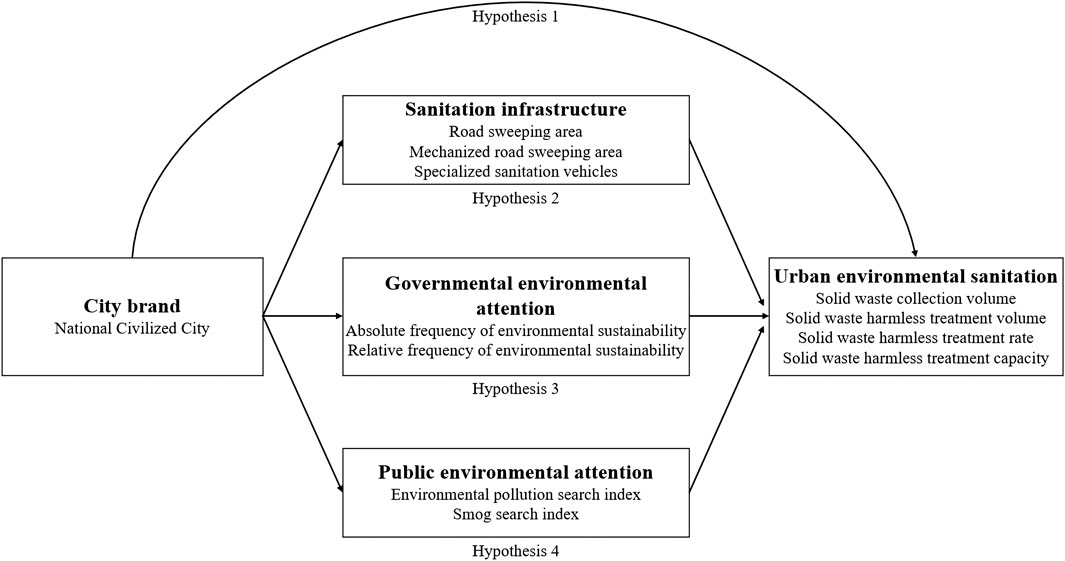Advancing urban sustainability assessment: a novel DEA-based framework for multidimensional analysis in Chinese cities – Nature

Executive Summary
A study was conducted to address the significant social and economic disparities hindering the achievement of the Sustainable Development Goals (SDGs) in urban areas, particularly within developing nations. An extended sustainability framework was developed to assess urban performance across three critical dimensions: Economy-Environment, Infrastructure Construction, and Social Development. This framework directly aligns with key SDGs, including SDG 11 (Sustainable Cities and Communities), SDG 3 (Good Health and Well-being), SDG 4 (Quality Education), SDG 8 (Decent Work and Economic Growth), and SDG 9 (Industry, Innovation and Infrastructure). Utilizing a novel methodological approach combining a DEA-based Benefit of the Doubt (BoD) model with the BP-DEMATEL model, the study analyzed data from 261 Chinese cities between 2009 and 2018. Key findings indicate an overall improvement in urban sustainability efficiency, yet significant performance gaps persist between cities, challenging the principle of SDG 10 (Reduced Inequalities). The Economy-Environment dimension was identified as the primary driver of sustainability, while Infrastructure Construction and Social Development were found to be characteristic dimensions crucial for long-term progress. The report provides data-driven policy recommendations to help governments formulate targeted strategies for more inclusive and sustainable urban development in line with the 2030 Agenda for Sustainable Development.
1.0 Introduction: Urban Sustainability and the Global Goals
1.1 The Challenge of Uneven Urban Development
Cities worldwide face significant challenges related to uneven socio-economic development, which jeopardizes their long-term sustainability. Disparities in education, employment, and public services threaten the stability and inclusivity of urban environments. These imbalances are particularly pronounced in developing countries, where rapid urbanization often outpaces the development of essential infrastructure and social support systems. Addressing these gaps is fundamental to creating resilient and equitable urban centers.
1.2 Aligning with the Sustainable Development Goals (SDGs)
The United Nations’ 2030 Agenda for Sustainable Development provides a comprehensive blueprint for achieving a sustainable future. This study is anchored in the principles of the SDGs, with a primary focus on:
- SDG 11 (Sustainable Cities and Communities): Making cities inclusive, safe, resilient, and sustainable.
- SDG 10 (Reduced Inequalities): Addressing the disparities in development and efficiency among different urban areas.
The research extends to other interconnected goals, recognizing that urban sustainability is a multidimensional issue requiring a harmonious balance between economic, social, and environmental objectives.
1.3 Research Objectives
The primary objectives of this research were to:
- Develop an extended sustainability framework that integrates economic, environmental, infrastructural, and social dimensions, with a strong emphasis on human development quality.
- Introduce a novel methodological model to assess the efficiency of this complex urban system and its constituent parts.
- Empirically analyze the sustainability performance of Chinese cities to identify efficiency gaps, key drivers, and areas for improvement.
- Provide actionable, policy-relevant insights to support the creation of targeted strategies for achieving the SDGs at the municipal level.
2.0 An Extended Framework for Urban Sustainability Assessment
To provide a holistic assessment, a three-dimensional framework was established. Each dimension is composed of specific indicators that reflect progress toward various Sustainable Development Goals.
2.1 Core Dimensions and SDG Linkages
- Economy-Environment Dimension: This dimension evaluates the balance between economic productivity and environmental protection. It transforms inputs (e.g., capital, labor) into desirable outputs (e.g., GDP) while accounting for undesirable outputs (e.g., pollution). This directly relates to SDG 8 (Decent Work and Economic Growth), SDG 12 (Responsible Consumption and Production), and SDG 13 (Climate Action).
- Infrastructure Construction Dimension: This dimension measures the quality and availability of essential urban infrastructure, including transportation, green spaces, and water systems. It is a critical component of SDG 9 (Industry, Innovation and Infrastructure) and a foundational element for achieving SDG 11.
- Social Development Dimension: This dimension assesses the quality of life and human capital development, with a focus on three key aspects:
- Education: Measured by inputs like expenditure and employees, and outputs like student enrollment, aligning with SDG 4 (Quality Education).
- Health: Measured by outputs such as the availability of doctors and hospital beds, reflecting progress toward SDG 3 (Good Health and Well-being).
- Culture: Measured by access to cultural resources like public libraries, contributing to the social fabric of SDG 11.
3.0 Methodological Approach
A novel, multi-stage methodological framework was designed to evaluate the complex and varied structures within the urban sustainability system.
3.1 An Integrated Analytical Model
The analysis was conducted through a four-part process:
- DEA-based Benefit of the Doubt (BoD) Model: A new model was developed to assess the efficiency of the overall sustainability system and its individual dimensions. This model is uniquely capable of handling divisions with different structures (e.g., some with inputs and outputs, others with only outputs).
- Relative Weight Analysis: Strong Complementary Slackness Conditions (SCSCs) were applied to derive unique optimal weights, allowing for an objective assessment of the relative priority of each dimension in the sustainability system.
- Coupling and Coordination Analysis: The coupling degree (CD) and coupling coordination degree (CCD) were calculated to measure the level of synchronized and balanced development among the three dimensions.
- BP-DEMATEL Model: This model was used to identify the causal relationships between the dimensions, distinguishing between “driving” dimensions that influence the system and “characteristic” dimensions that are influenced by it.
3.2 Data and Scope
The empirical analysis was based on a comprehensive dataset covering 261 cities in mainland China over a ten-year period from 2009 to 2018. Data were sourced from the National Bureau of Statistics of China and the Ministry of Housing and Urban-Rural Development. All monetary values were adjusted for inflation to ensure comparability over time.
4.0 Analysis of Urban Sustainability in Chinese Cities
4.1 Multi-Dimensional Efficiency Assessment
- Overall Efficiency Trends: The overall sustainability efficiency of Chinese cities demonstrated a consistent upward trend, increasing by 38.61% over the study period. The most significant improvement was in the social development dimension, which saw its efficiency rise by 40.19%.
- Dimensional Performance and Disparities: Despite overall progress, performance was uneven across dimensions. The Economy-Environment dimension maintained the highest average efficiency score (0.551), while the Infrastructure Construction dimension was the lowest (0.085), indicating it is a major source of inefficiency. This highlights a development imbalance that could undermine long-term sustainability.
- City-Level Performance: Significant disparities exist among cities, reflecting a challenge to SDG 10 (Reduced Inequalities).
- Top Performers: Cities like Shenzhen, Dongguan, and Guangzhou demonstrated high efficiency across all three dimensions, serving as benchmarks for balanced and sustainable development.
- Lagging Cities: Cities such as Longnan, Suihua, and Zhoukou showed low overall efficiency. Many of these cities performed relatively well in the Economy-Environment dimension but lagged significantly in Infrastructure Construction and Social Development, suggesting a focus on economic growth at the expense of achieving SDG 3, SDG 4, and SDG 9.
4.2 Coordination and Coupling Analysis
The analysis of coupling-related indexes revealed that while Chinese cities are, on average, achieving more coordinated development, many still struggle with synchronized growth. Five cities (Dazhou, Suihua, Bazhong, Zhoukou, and Longnan) were identified as being in a “separated coupled phase,” indicating severe imbalances and significant barriers to achieving integrated sustainability as envisioned by the SDGs.
4.3 Identifying Driving Factors and Priorities
- Relative Priority of Dimensions: Relative weight analysis showed that the Infrastructure Construction dimension holds the highest priority within the system, followed by Social Development. This underscores the perceived importance of investing in infrastructure (SDG 9) and human capital (SDG 3, SDG 4) to drive urban progress.
- Causal Analysis: The BP-DEMATEL model identified the Economy-Environment dimension as the primary “driving” force, meaning its performance strongly influences the other two dimensions. Conversely, Infrastructure Construction and Social Development were identified as “characteristic” dimensions, whose progress is crucial for realizing long-term, holistic urban sustainability.
5.0 Key Findings and Policy Implications for Achieving the SDGs
5.1 Summary of Key Findings
- An upward trend in overall sustainability efficiency is evident, but significant inter-city disparities persist, hindering progress toward SDG 10.
- Infrastructure Construction and Social Development are the primary sources of inefficiency, indicating an urgent need for greater investment in areas related to SDG 3, SDG 4, and SDG 9.
- The Economy-Environment dimension is the core driver of the system, highlighting the need to ensure that economic growth (SDG 8) is both green and serves to finance broader sustainability objectives.
- Many cities exhibit imbalanced development, prioritizing short-term economic gains over long-term investments in social well-being and resilient infrastructure, which is contrary to the integrated nature of the SDGs.
5.2 Policy Recommendations
- Promote Inclusive Development: Central and local governments must implement targeted policies and allocate resources to support lagging cities, focusing on their specific inefficiencies to reduce regional disparities and advance SDG 10 and SDG 11.
- Strengthen Foundational Pillars: Increased investment is required to improve the efficiency of infrastructure and social services. This includes enhancing transport networks, public health systems, and educational quality to build a strong foundation for achieving SDG 3, SDG 4, and SDG 9.
- Foster Synchronized Growth: Policymakers should adopt integrated strategies that promote balanced development across all three dimensions, moving away from siloed approaches to ensure that economic, social, and environmental progress is mutually reinforcing.
- Leverage Economic Growth for Sustainability: Economic development strategies must be aligned with environmental protection and used to fund critical advancements in infrastructure and social welfare, creating a virtuous cycle that supports long-term urban sustainability.
6.0 Conclusion
This report presents a novel framework for assessing urban sustainability through the lens of the Sustainable Development Goals. The empirical analysis of Chinese cities reveals a complex landscape of progress and persistent challenges. While overall efficiency is improving, significant imbalances between economic, social, and infrastructural development threaten to undermine long-term sustainability. The findings underscore that achieving SDG 11 (Sustainable Cities and Communities) requires a holistic and data-driven approach. By identifying the key drivers of efficiency and the primary sources of inefficiency, this study provides policymakers with crucial insights to design more effective, targeted, and inclusive strategies that accelerate progress toward the 2030 Agenda.
Which SDGs are addressed or connected to the issues highlighted in the article?
SDG 3: Good Health and Well-being
- The article addresses this goal by including a “social development dimension” in its sustainability framework, which explicitly incorporates a “health” aspect. It aims to measure the performance of cities in providing health services.
SDG 4: Quality Education
- This goal is central to the article’s “social development dimension.” The study analyzes disparities in “educational opportunities” and uses education-related inputs and outputs to assess urban sustainability, highlighting its importance for long-term development.
SDG 8: Decent Work and Economic Growth
- The article’s “economy-environment dimension” directly relates to this goal by evaluating economic performance (GDP) alongside environmental impacts. It discusses the challenge of balancing “economic growth” with other sustainability pillars and mentions “employment hurdles” as a key social challenge.
SDG 9: Industry, Innovation, and Infrastructure
- A core component of the study is the “infrastructure construction dimension.” The article analyzes infrastructure disparities and their impact on urban sustainability, emphasizing the need for development in areas like transport and water systems.
SDG 10: Reduced Inequalities
- The article is fundamentally about addressing inequalities. It opens by stating that cities “grapple with social challenges due to uneven socio-economic development” and its findings reveal “considerable variability among cities” and “significant disparities in efficiency scores.”
SDG 11: Sustainable Cities and Communities
- This is the primary SDG addressed. The entire study is focused on assessing and improving “urban sustainability” in Chinese cities. It examines the interplay of economic, social, environmental, and infrastructural dimensions to make urban development more “inclusive,” “data-driven,” and sustainable.
SDG 12: Responsible Consumption and Production / SDG 13: Climate Action
- These goals are addressed through the “economy-environment dimension,” which considers “undesirable outputs” of economic activity. The article mentions “environmental challenges,” “environmental protection,” “energy conservation, and emission reduction” as key concerns for sustainable urban development.
What specific targets under those SDGs can be identified based on the article’s content?
SDG 3: Good Health and Well-being
- Target 3.8: Achieve universal health coverage, including financial risk protection, access to quality essential health-care services and access to safe, effective, quality and affordable essential medicines and vaccines for all.
- The article’s focus on the “health aspect” within social development, measured by the availability of “doctors” and “hospital beds,” directly relates to assessing access to quality essential healthcare services.
SDG 4: Quality Education
- Target 4.1: By 2030, ensure that all girls and boys complete free, equitable and quality primary and secondary education leading to relevant and effective learning outcomes.
- The study’s concern with “disparities in educational opportunities” and its use of indicators like “number of students” and “education expenditure” align with the goal of providing equitable and quality education.
- Target 4.a: Build and upgrade education facilities that are child, disability and gender sensitive and provide safe, non-violent, inclusive and effective learning environments for all.
- The analysis of “education expenditure” as an input reflects the investment in educational resources and facilities, which is a prerequisite for this target.
SDG 8: Decent Work and Economic Growth
- Target 8.1: Sustain per capita economic growth in accordance with national circumstances and, in particular, at least 7 per cent gross domestic product growth per annum in the least developed countries.
- The article measures economic performance using “GDP” as a desirable output, directly connecting to the objective of sustaining economic growth.
SDG 9: Industry, Innovation, and Infrastructure
- Target 9.1: Develop quality, reliable, sustainable and resilient infrastructure, including regional and transborder infrastructure, to support economic development and human well-being, with a focus on affordable and equitable access for all.
- The article’s “infrastructure construction dimension” is a direct assessment of this target, using indicators such as “drainage pipelines,” “road area,” and “green coverage” to evaluate the state of urban infrastructure.
SDG 10: Reduced Inequalities
- Target 10.2: By 2030, empower and promote the social, economic and political inclusion of all, irrespective of age, sex, disability, race, ethnicity, origin, religion or economic or other status.
- The study’s framework is designed to identify and analyze “uneven development” and “disparities” among cities, aiming to provide “policy-relevant insights” for more “inclusive urban development.”
SDG 11: Sustainable Cities and Communities
- Target 11.3: By 2030, enhance inclusive and sustainable urbanization and capacity for participatory, integrated and sustainable human settlement planning and management in all countries.
- The article’s core objective is to create a framework for assessing and enhancing “urban sustainability,” which directly supports this target.
- Target 11.6: By 2030, reduce the adverse per capita environmental impact of cities, including by paying special attention to air quality and municipal and other waste management.
- The inclusion of “undesirable outputs” (such as “solid waste, sulfur dioxide, and wastewater” mentioned in the literature review) in the “economy-environment dimension” aligns with this target.
- Target 11.7: By 2030, provide universal access to safe, inclusive and accessible, green and public spaces, in particular for women and children, older persons and persons with disabilities.
- The use of “green coverage” as an indicator for infrastructure construction directly measures progress toward this target.
Are there any indicators mentioned or implied in the article that can be used to measure progress towards the identified targets?
Yes, the article is explicit about the indicators used in its analytical framework to measure the performance of cities across different dimensions of sustainability. These indicators directly serve to measure progress towards the identified targets.
Economy-Environment Dimension Indicators
- GDP: Used as a desirable output to measure economic growth.
- Fixed capital & Total current assets: Used as inputs for economic production.
- Undesirable outputs: The framework accounts for negative environmental impacts. While the specific pollutants for the empirical study are not listed in the abstract or methods, the literature review section mentions common indicators like “solid waste, sulfur dioxide, and wastewater,” which are implied in the model.
Infrastructure Construction Dimension Indicators
- Drainage pipelines: Measures sanitation and water management infrastructure.
- Green coverage: Measures the extent of public green spaces.
- Road area: Measures transportation infrastructure. (Note: The article states these are assessed on a per capita basis).
Social Development Dimension Indicators
- Education:
- Inputs: Number of education employees, Education expenditure.
- Output: Number of students.
- Health:
- Outputs: Doctors, Hospital beds (per capita).
- Culture:
- Output: Public library collections (per capita).
Composite Indicators for Overall Progress
- Overall and dimensional efficiency scores: Used to benchmark and compare the sustainability performance of different cities.
- Coupling degree (CD) and Coupling coordination degree (CCD): Used to measure the “association degree” and “balanced progress” among the different sustainability dimensions.
SDGs, Targets, and Indicators Analysis
| SDGs | Targets | Indicators Identified in the Article |
|---|---|---|
| SDG 3: Good Health and Well-being | 3.8: Achieve universal health coverage. |
|
| SDG 4: Quality Education | 4.1: Ensure inclusive and equitable quality education. 4.a: Build and upgrade education facilities. |
|
| SDG 8: Decent Work and Economic Growth | 8.1: Sustain per capita economic growth. |
|
| SDG 9: Industry, Innovation and Infrastructure | 9.1: Develop quality, reliable, sustainable and resilient infrastructure. |
|
| SDG 10: Reduced Inequalities | 10.2: Promote universal social, economic and political inclusion. |
|
| SDG 11: Sustainable Cities and Communities | 11.3: Enhance inclusive and sustainable urbanization. 11.6: Reduce the adverse per capita environmental impact of cities. 11.7: Provide universal access to safe, inclusive and accessible, green and public spaces. |
|
Source: nature.com

What is Your Reaction?
 Like
0
Like
0
 Dislike
0
Dislike
0
 Love
0
Love
0
 Funny
0
Funny
0
 Angry
0
Angry
0
 Sad
0
Sad
0
 Wow
0
Wow
0












































































